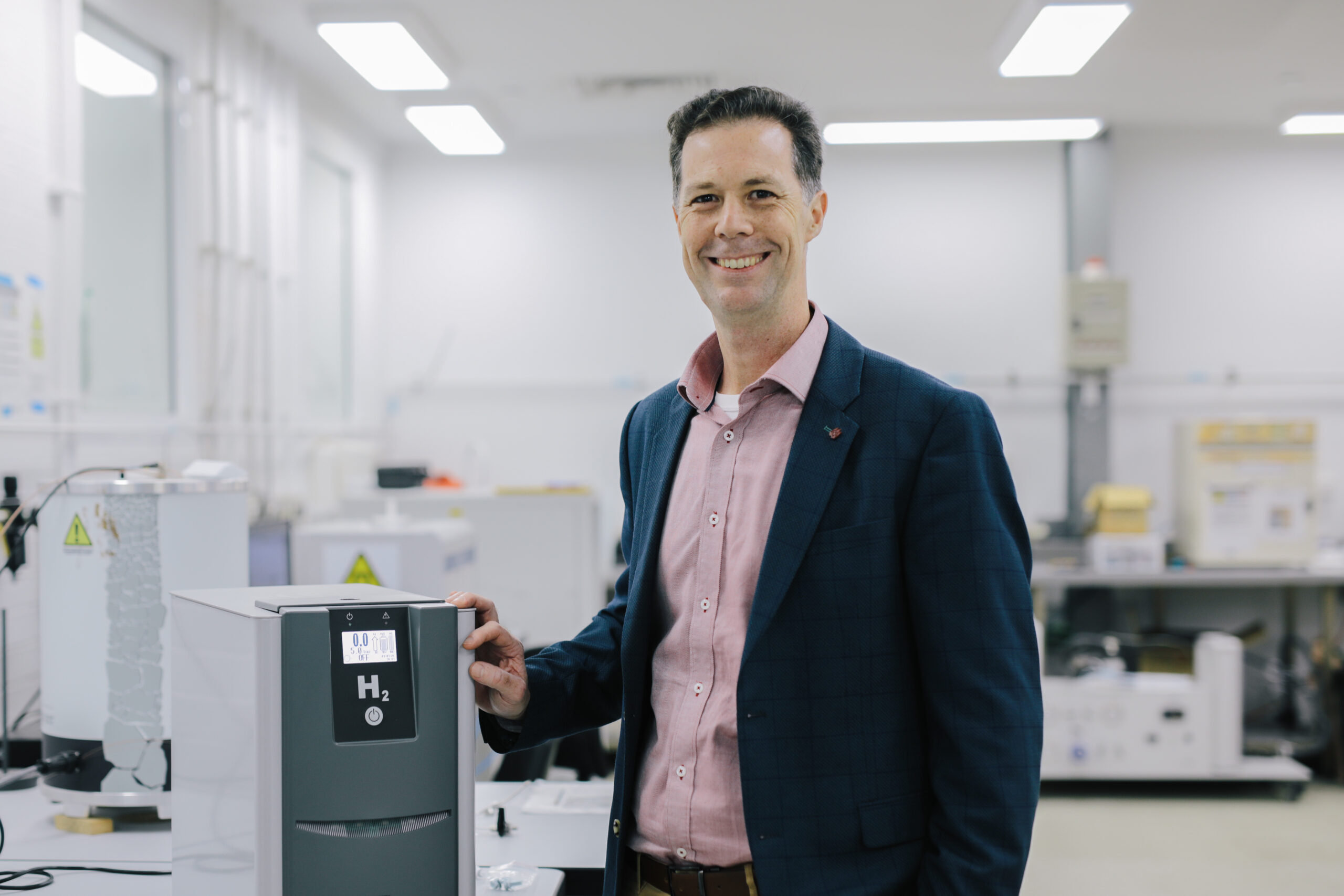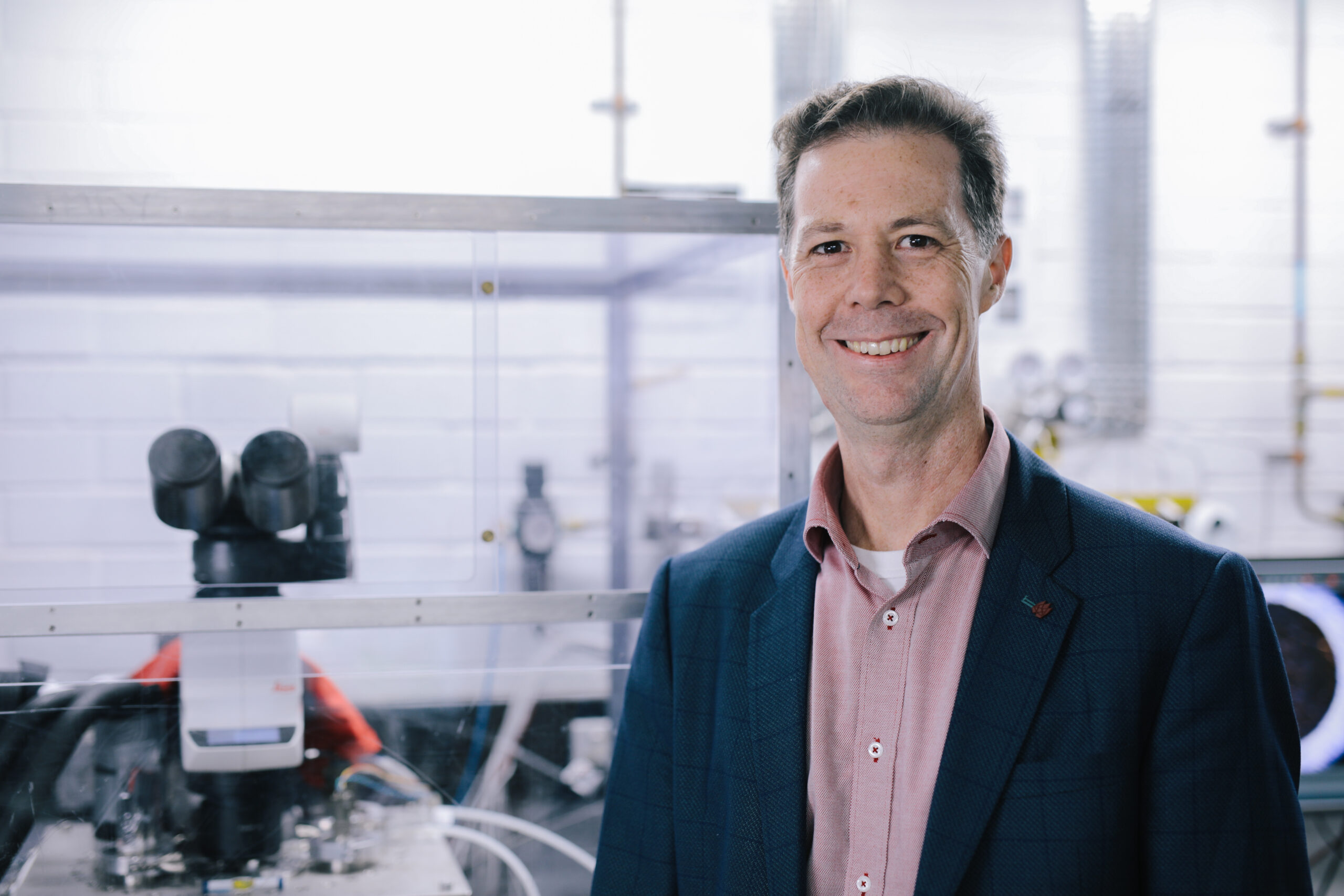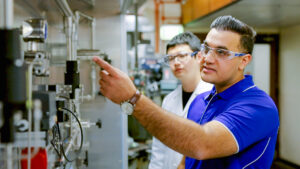Professor Eric May believes humanity faces a central tension – the need to raise people out of poverty while reducing our impact on the planet.
This week, the UWA researcher was named WA Scientist of the Year at the 2021 Premier’s Science Awards. He has spent the last 15 years studying ways to deliver energy to people as efficiently and cleanly as possible. And he increasingly sees hydrogen playing a big part in WA’s energy future.
“It turns out that Western Australia is really well placed with our world-leading LNG industry to take many of those same skillsets and knowledge and even infrastructure and apply it to this new opportunity,” Eric says.
Quantum mechanics on an industrial scale
Eric is an expert in fluid science, thermodynamics, metrology and natural gas engineering.
He currently leads the Future Energy Exports Cooperative Research Centre, working with industry to help grow Australia’s hydrogen export industry.
Part of the CRC’s research looks at how to produce liquid hydrogen as efficiently and safely as possible.
“Making LNG is hard. Making liquid hydrogen is much, much harder,” Eric says.
“It’s several times more energy and 100°C colder, and you actually have to worry about quantum mechanics if you don’t want it to suddenly all boil away.”
While someone like, say, NASA has been making liquid hydrogen for 50 years, Eric says they didn’t have to worry about efficiency.
“On an industrial scale, you really have to be as efficient as possible and get rid of all those reliability challenges,” he says. “That’s really exciting.”
The highs and lows of a career in science
Eric’s research has helped reduce the cost and environmental impact of LNG production, decreased greenhouse gas emissions from coal mines and optimised air conditioning cycles based on new, environmentally friendly refrigerants.
His work has helped difficult offshore gas reserves be developed and advanced carbon capture and storage operations.
And his research led to spin-off company Gas Capture Technologies, which offers a way to capture methane emitted from coal mines, biogas and landfill gas plants.

But one of Eric’s biggest concerns will feel familiar to many West Aussies – being forgotten by the eastern states.
“Often there are countries to our north that have a better understanding of what’s going on in Western Australia than the east,” he says.
“And COVID has made our scientific and technological isolation even more difficult to manage.
“Building collaborative research projects likely to be competitive in national funding schemes becomes increasingly difficult and might start to limit ongoing success rates.”
How your research impacts the world
Eric’s advice for early-career scientists is to do what you enjoy but also think about the impact of your research beyond traditional academic measures.
“Publishing papers is important, and you need to do it,” he says.
“But you also need to think about how your research can impact the world and how it can be communicated to a broader audience to help them understand the significance of it.
Above all, he says, surround yourself with great people.
“The most important thing, perhaps in any endeavour in life, is to work with great people,” he says. “So try to seek them out.”









